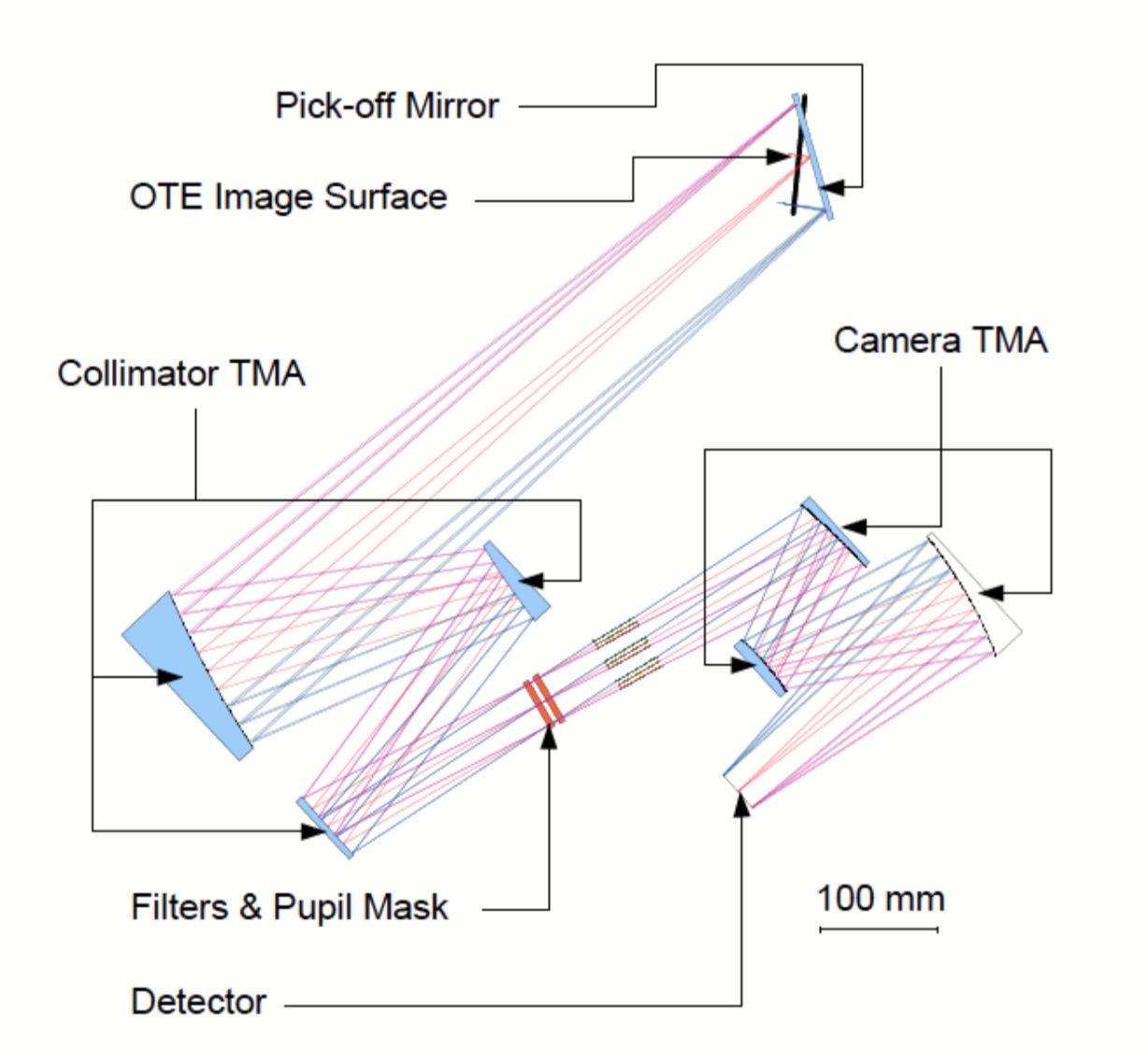NIRISS Optics and Focal Plane
NIRISS has an all-reflective optical design that consists of:
- a pick-off mirror (POM),
- a 3-mirror collimator assembly,
- a dual pupil/filter wheel assembly,
- a 3-mirror camera assembly, and
- a single Hawaii 2RG detector
On this page
NIRISS optical assembly
The optical path is illustrated schematically in Figure 1. The optical assembly is attached to an aluminum optical bench, which is shared with the JWST Fine Guidance Sensor. Three kinematic mounts, made of titanium, attach the optical assembly to the structure of the Integrated Science Instrument Module (ISIM).
Pick-off mirror
The pick-off mirror (POM) is a flat mirror composed of an aluminum substrate coated with nickel plating. Light from the fine steering mirror of the JWST Optical Telescope Element (OTE) is focused onto the NIRISS POM and directed into the instrument.
The POM is mounted on a movable stage that serves as the coarse focus mechanism (CFM) for NIRISS.
It has 4 coronagraphic occulters engraved in its surface. These deep, cone-shaped holes in the nickel overcoat are remnants of the original tunable filter imager (TFI) configuration of the instrument. Although NIRISS does not have a coronagraphic mode, these occulters will nevertheless leave their imprint on all images of externally-illuminated sources. When projected onto the detector, the occulters appear as circular spots with diameters of 0.58", 0.75", 1.5", and 2.0" (approximately 9, 11, 23, and 31 pixels, respectively), with positions that depend slightly on the focus.
Detector
The NIRISS detector is a single Hawaii 2RG sensor chip array with 2048 × 2048 pixels. It provides a field of view of 2.2' × 2.2' with a plate scale of approximately 0.066"/pixel.



